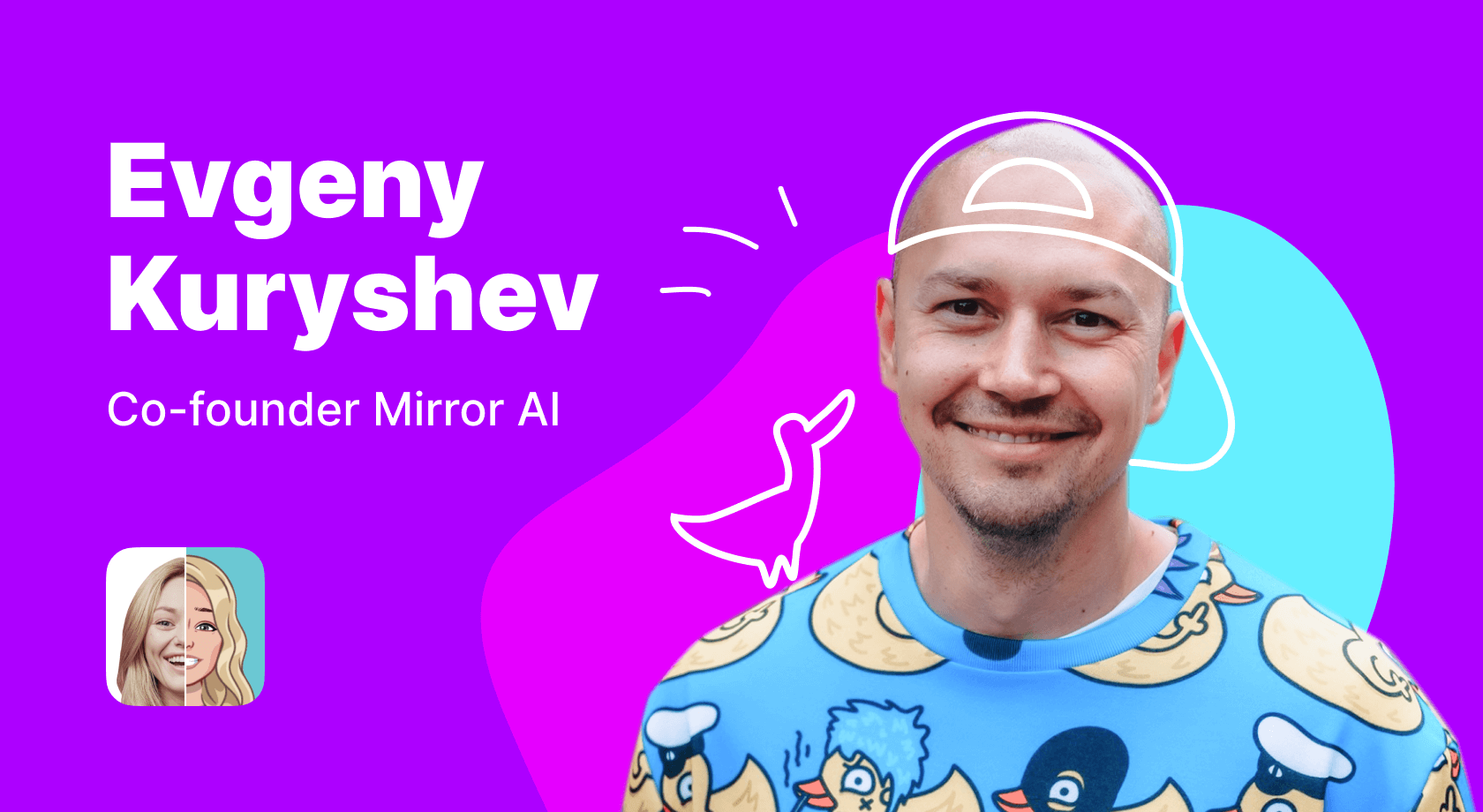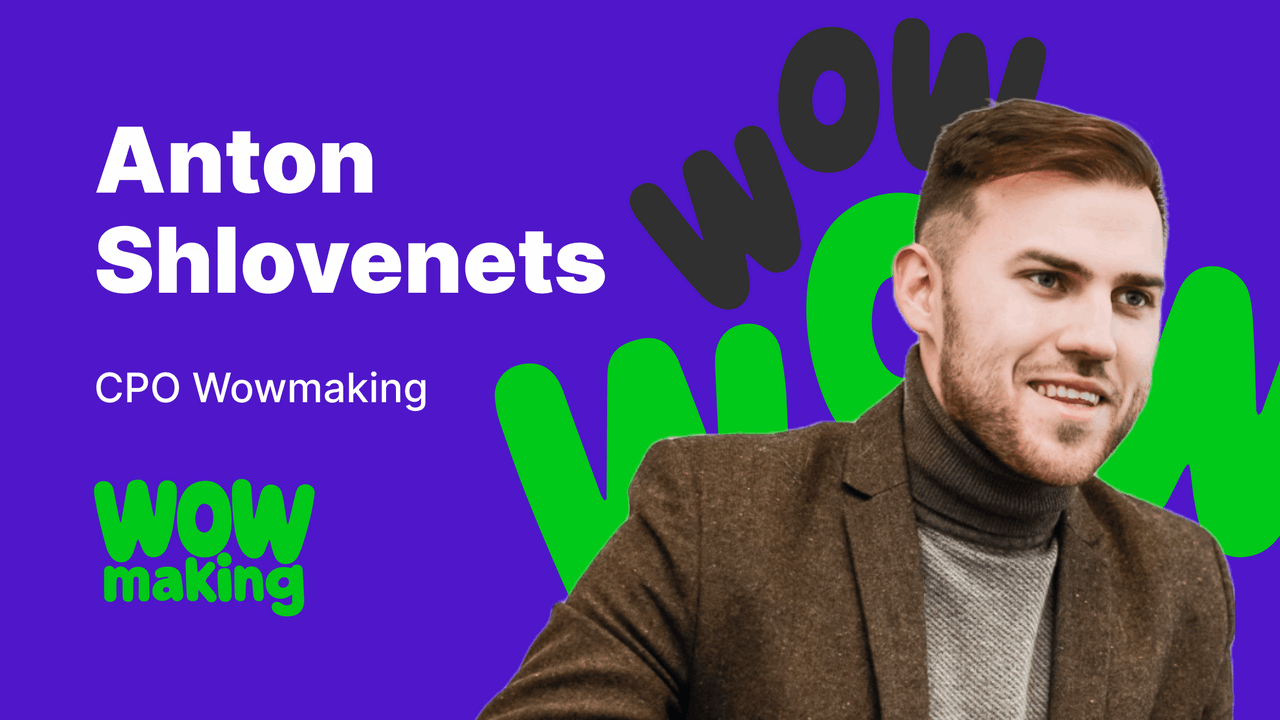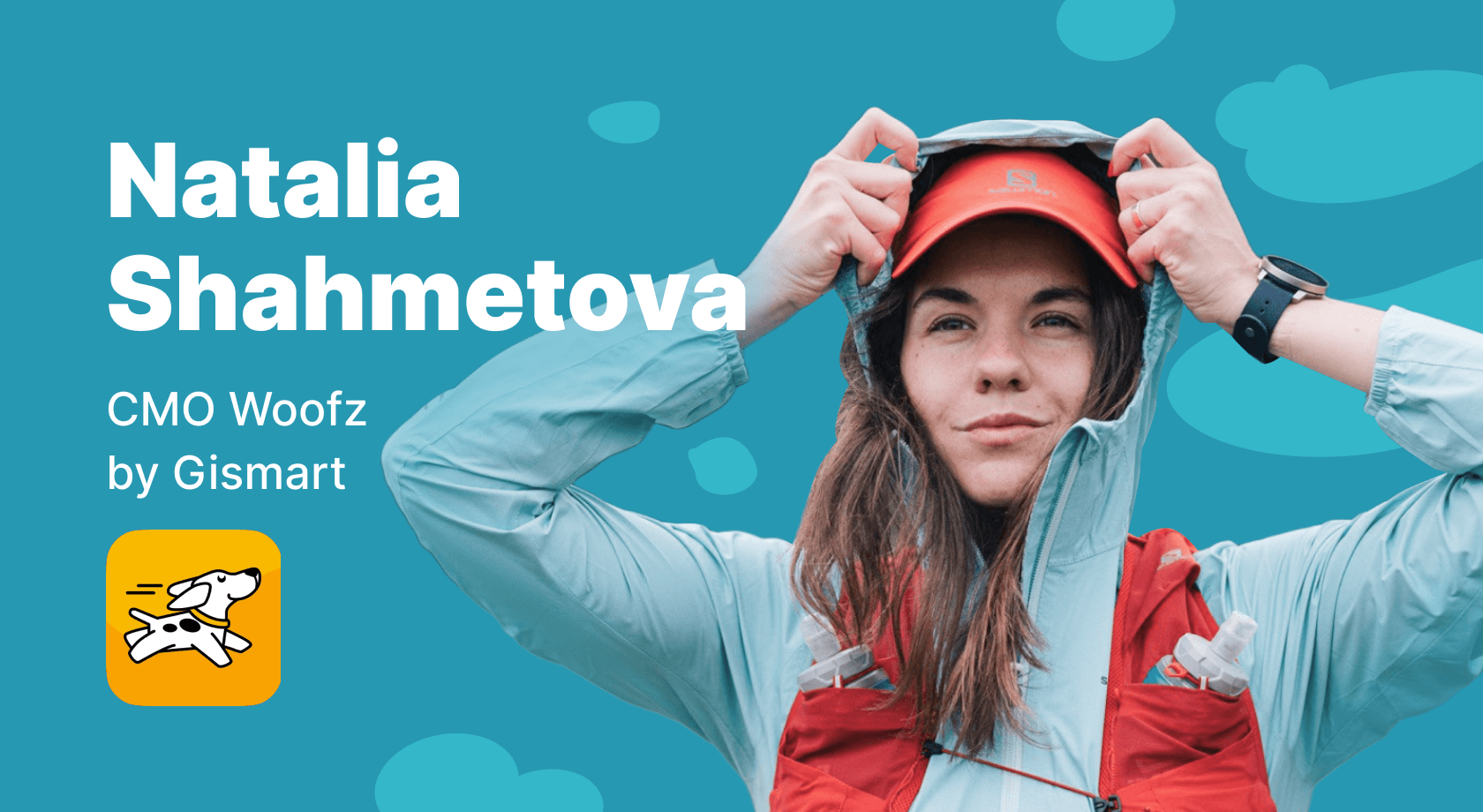Evgeny is a co-founder of Mirror AI, an app which creates personal stickers from selfies. Evgeny also was a CTO of Ostrovok, which is one of the largest online hotel booking services in Eastern Europe. Evgeny told us about Mirror, his experience of fundraising and participating Y Combinator, and shared his thoughts on idea validation in startups.
The most interesting quotes of the episodes are below, translated automatically with DeepL.
What is Mirror-AI
Evgeny Kuryshev: Mirror takes a photo, turns it into 1000 emoji that look like you, which you can shake in social networks and messengers. That’s all it does. In fact, we’ve tried to play around with a lot there, but so far it’s a combine that takes your face, a picture, a selfie, or a selfie of your friend and makes something cool out of it – maybe similar, maybe not similar to that person. You get stickers, emoji, animations that you can then somehow shear, distribute.
It’s used in completely different places. There’s the b2c classic application, where people just share it. There’s the API that we sell, which makes us more and more money; various other services use this. There’s a lot of niche stuff where all the kids in kindergarten make emoji’s about themselves and hang them on their lockers.
Y Combinator
Nikita Maidanov: Was the launch in 2017?
Evgeny Kuryshev: Yes, December 2016, when we went to California for an interview at Y Combinator, but nothing worked out there, there were a number of conversations with different investors, one of the last – there was an interview at Y Combinator, that was the day we got there, we closed the first $400,000. Everything flew up for us right away, and after that it was off. Very quickly we fundraised the first two and a half million, in a couple of months, even before the end of YC, then we postponed Demo Day for a year, after that we fundraised some more.
But overall we focused on the product, we didn’t have it in early 2017. We were going, applying to YC without even a prototype in hand, let alone a product or sales. That’s pretty atypical now, it used to be pretty common – in 2010, people were applying to gas pedals all over the world who didn’t have a product, it was normal. Now it’s more the exception than the rule. Probably, we only got in because we already had experience in entrepreneurship under our belt, Ostrovok was a big enough thing at the time. Seryozha did other companies, which were also, to varying degrees of success, quite large.
Validation of the idea
Evgeny Kuryshev: We did what we do in the worst startup traditions: we think that this is right and will work. We have different fake ways to convince ourselves of this. For example, investors give us money. This doesn’t really mean anything, especially if you’re a charismatic guy who knows how to convince, who has already succeeded in something.
It’s even worse in terms of validation, because investors start giving you money, you think: I’m smart, cool, we came up with this cool thing, other people believe in it. it means something, but it certainly doesn’t mean that you have any product-market fit or overall value. You start hiring other people who also believe in it. For me, the main problem was that I was paying too much attention to whether some other people believed in it – the people I was hiring, the people who were giving me money as an investor, my co-founder, my mom – all those people, their belief in you, unfortunately, didn’t mean that much. It was impossible to clearly communicate the idea at the time, also because the idea was too abstract: let’s learn to reconstruct people’s faces-no matter if it’s in the form of an emoji cartoon or something, it will be a realistic image of a person, learn to reconstruct, and then we’ll think of something. Classic hallucination. It’s a bad approach to think that way.
Involvement in emoji apps
Evgeny Kuryshev: Snapchat bought Bitstrips for $100 million or so. It was an upward trend. We didn’t realize at the time either how important it was that you couldn’t use computer vision in Bitstrips and Bitmoji, why that was – we only later figured it out. It was very interesting.
You’re just hand-designing. Out of 40 different eyes I choose these eyes, out of 20 noses I choose my nose, and so on. Our concept was that it’s disgusting, we’re going to beat them because of it. In fact, we lost to them because of it. The guys were super smart, the guys who did it, they understood that a person who spends an hour designing his avatar, putting it together by hand, he gets so involved in it that he doesn’t want to lose it. Such a person will have a much higher level of engagement than someone who has received an avatar that he has no personal attachment to. Even if it is of the same quality as the one the person has built with his own hands. The important thing is that a person, by building with his hands, by investing, he connects with the product of his labor. He can continue to play and reassemble it, continue to invest. That was the game. The game was not using this avatar, but assembling it, if you think of the feedback loop. But we didn’t realize that at the time. It took us years of product analytics to catch up to these things.
Although we could have talked to a smart person who knew it all. I don’t think we would have believed him at the time.
Technical implementation
Nikita Maidanov: Were you sure that you will be able to realize it technically?
Evgeny Kuryshev: That was my biggest concern. I think that so far no one has figured it out, understood what makes people’s faces recognizable by them. I still don’t know what makes me me. There are people who understand it intuitively, they can’t pack it into knowledge, but they can, without taking their pen off a piece of paper, draw me with one stroke, I understand that this has the essence of me, my face. And computer algorithms can’t do that yet, although there are various approaches that come close to that, that do a pretty good job of it. But so far no one has solved this riddle – what makes me recognizable as me.
There’s also a very powerful psychological aspect there in that I don’t recognize myself the way my friends recognize me, my friends don’t recognize me the way those who don’t know me recognize me. Those who don’t know me recognize me in a very different algorithm than people who have seen me and know me many times. This psychological effect works in very different ways, and we’ve figured that out in an interesting way, too. This technically complicates the task, because it is much more difficult to make a person like the result of our program. That’s why we often began to try experimenting with the fact that the first picture you fill in not yourself, in your friend, because then the results came out better, people like the way your friends turned out more than they do. It’s because of this psychological effect.
I believe that technically the five out of five task is still unsolved. At the time, I was very much worried about it. Then I realized it wasn’t that important. If we’re talking about a relatively successful business, you can do a lot of things around here without completely solving this problem. Plus there is a certain amount of technical progress, it’s still going on.
How Mirror AI works
Nikita Maidanov: Are the avatars built on the device or on the server?
Evgeny Kuryshev: There’s a hell of a hybrid scheme now, when most of the work has been transferred to the device, but we still do something on the server. If it’s an API, it’s all on the server, including the rendering of avatars. I can tell you for a fact that we’ve wasted over $750,000 on servers rendering and doing computer vision during that time. It wasn’t investor money, it was free credits on Amazon and Azure that we were given because we were at Y Combinator. That’s one of the perks of Y Combinator – you get a shitload of money for cloud services. To this day the employees of these cloud services write and call and ask why we don’t want to work with them anymore. Hell of a budget… When we ran out of money, we moved on to the next cloud service. When we ran out of money, we had to move most of the grids to the device. This allowed us to get off to a fast start. If it wasn’t for that, we would have been struggling for a long time because the economics wouldn’t have worked out: when you have a million users uploading their photos and you have to render 500 stickers each, the amount of money that was spent on that was enormous.
Why in Mirror there are two styles of emoji
Vitaly Davydov: Mathematically speaking, there is no clear definition of what an avatar is. That said, is there a particular style in Mirror that you use to create people’s faces?
Evgeny Kuryshev: Two.
Vitaly Davydov: Even two. But actually, you can re-train the grid and do it a little bit differently in millions, billions of ways, there could be an infinite number of different styles. Why did you take these two that you have now?
Evgeny Kuryshev: We took a path where we were tied to the assets that the female artists drew for us. Two artists drew two sets of assets, and we used them to put faces together.
We could have gone a different way, where we could have taken the avatars we drew in a million different different styles and put them together not like a construction set: eyes, eyebrows, ears, noses, – but in some other way. We even did this approach, we just liked the results less. We still think that each approach has its advantages: one is more mechanistic, which we chose, it’s harder to create a new style there, but you have more variability within that style, more different rules, you can give control over what happens to the person themselves. There’s all sorts of constructors like changing clothes or constructing faces. The other one, it allows for more realism, more variation in different styles.
It’s interesting that for different applications, different things are more in demand. For example, in B2B everyone wants different styles, they only need 10 avatars, 10 or 20 stickers to get, not 1000, but they need to have their personal style that they want for themselves.
In B2C, a lot of people are more interested in getting different cool emotions, unusual, unexpected ones that they didn’t have before, just playing with their faces, with their characters. Rather, they’re more interested in changing contexts than styles. It’s like in games: in games you don’t have character styles changing, but you have a million different contexts.
About knowing how to spend money
Evgeny Kuryshev: When we already had investment, we started to expand the team quickly, we had a request for a computer graphics developer, an artist, a person who manages artists and freelancers, and so on. We had a sprawling team, we had 18 people at the peak, which is a lot for a startup like this. I understand that our previous experience played a role here, when throwing a problem with hats just because you have money, even if it’s super inefficient, fuck it, that’s what money is for. Let’s quickly hire a bunch of people and see if these smart people can do something cool.
Vitaly Davydov: Is this a bad approach or a good one?
Evgeny Kuryshev: Then I encountered an opposite approach, when we don’t hire anyone so that God forbid we don’t spend a little more money, we quietly, gently poke around in a corner and our sandbox until we understand that everything works. Then we’ll raise money, we’ll start doing something. Even when they’re already raising money, the guys don’t spend it either, because God forbid, you have to be careful. I think the truth is somewhere in the middle. Working and helping Russian startups, I more often encounter a situation where people don’t know how to spend money than a situation where they spend it too thoughtlessly.
Vitaly Davydov: What is more difficult – spending money or making money?
Evgeny Kuryshev: It is definitely more difficult to spend money wisely than to earn money in the B2C world.
Vitaly Davydov: Smart is natural. Not just go buy a Lamba.
Evgeny Kuryshev: Yes. I mean, spend it wisely, hire a person wisely, spend on making a normal site and not some shit, make normal marketing, even make normal basic marketing, it’s a difficult task, without which people who don’t have experience, if they do it themselves, don’t do it. If they go to some agency, very often the agency and people have different initiatives, in the end they fail too. It turns out that spending money smartly… A team that has raised half a million dollars wants to start running faster, the chance that people who are doing business for the first time will spend all that money smartly is very low. In part, maybe it’s a good thing they spend it slowly, so at least there’s less chance they’ll blow it.
But at the same time, the ability to make big bets in order to speed up your own growth, instead of being in a zombie state where you have money in your account, but can’t spend it because you don’t know how, is a challenge under the asterisk for aspiring entrepreneurs.
How Mirror started making money
Vitaly Davydov: An awkward question: how did Mirror started to make money?
Evgeny Kuryshev: That was the best thing that happened to us. It happened because at a certain point we decided to sell the company. It didn’t work out, there was a long story there, not that we went and talked once. A lot of talking, flying to different places. We decided we had to start making money.
That was the funniest time in my life when I stopped freaking out about having a company that was growing super fast, but nobody wanted to buy it. I started just monetizing, the whole thing was an incredible adventure. The only thing I thought about when I woke up every morning was: why didn’t I do this sooner. When you have a million people a day coming in, you start chopping dough off of them, it’s a pretty interesting feeling. I loved it. It was 2018. We decided that since we weren’t selling the company, we had to make money. We went experimenting.
I talked to my buddy who did the app, subscriptions. He said, “Just put a subscription like on Apple Music and see what happens.” And that’s it, simple advice, fucking advice, especially if you don’t know what to do. And we were working in 17 countries at the time, we just put the price that we had on Apple Music in every country, and we got dough right away. We were like, who are these people, why are they buying? Is there going to be a continuation of this subscription or not? Why are there so few people buying? The conversion rate was terrible. What to do? We started playing the game the real boys were playing: onboarding, push-notifications, priming, marketing, and the like.
Later we had a growing trend in B2B, we started selling our api, which is now a more interesting B2C story. But at that point it was a classic market and product research to see if we could make a growth story out of it.
If you like the podcast, please, support us with your likes, comments and subscriptions. It motivates us to record new episodes and invite outstanding guests:




